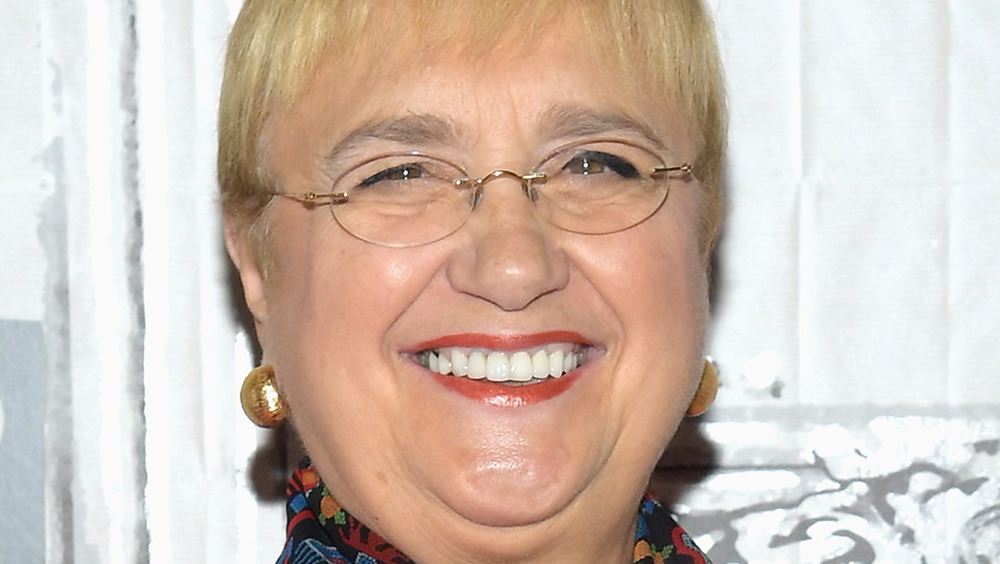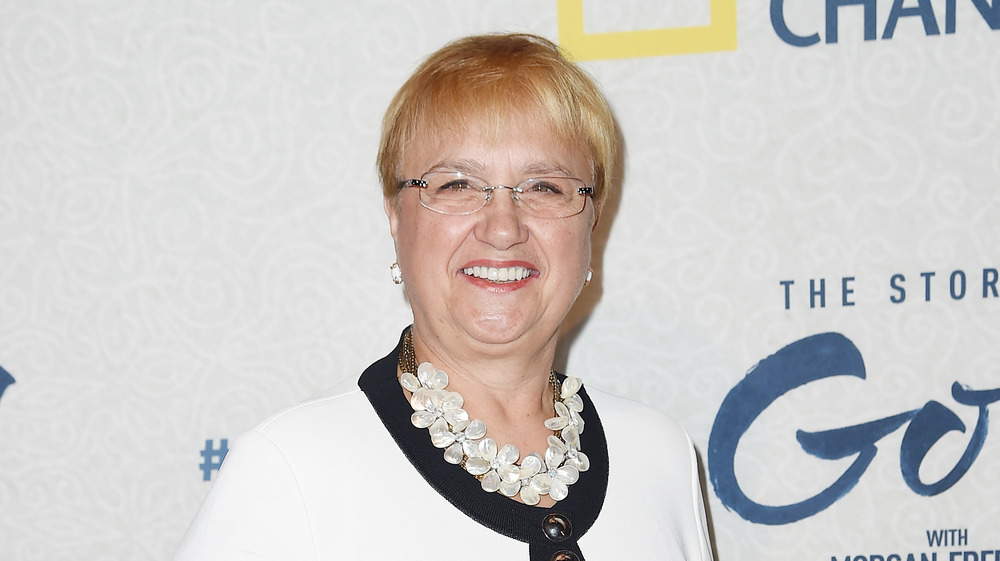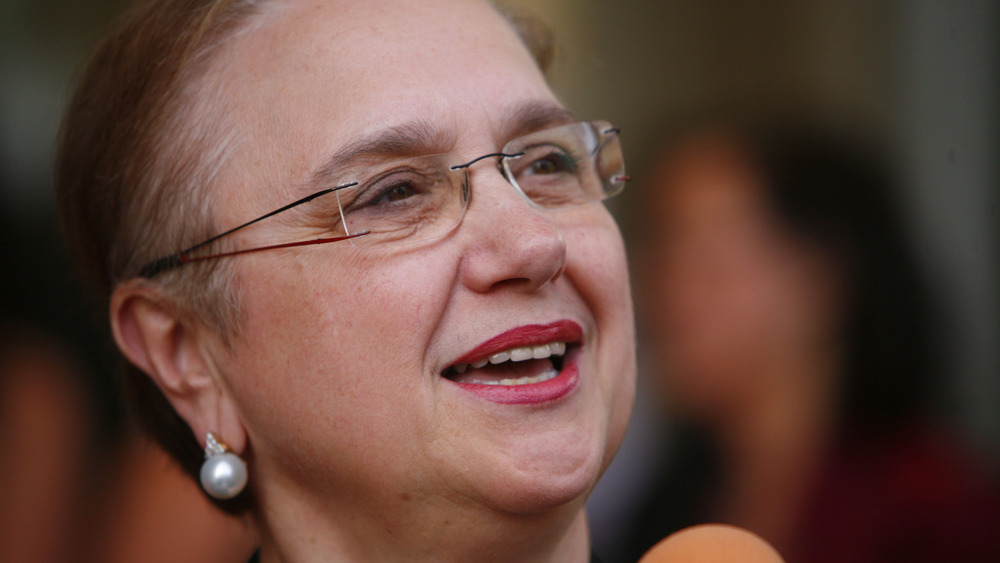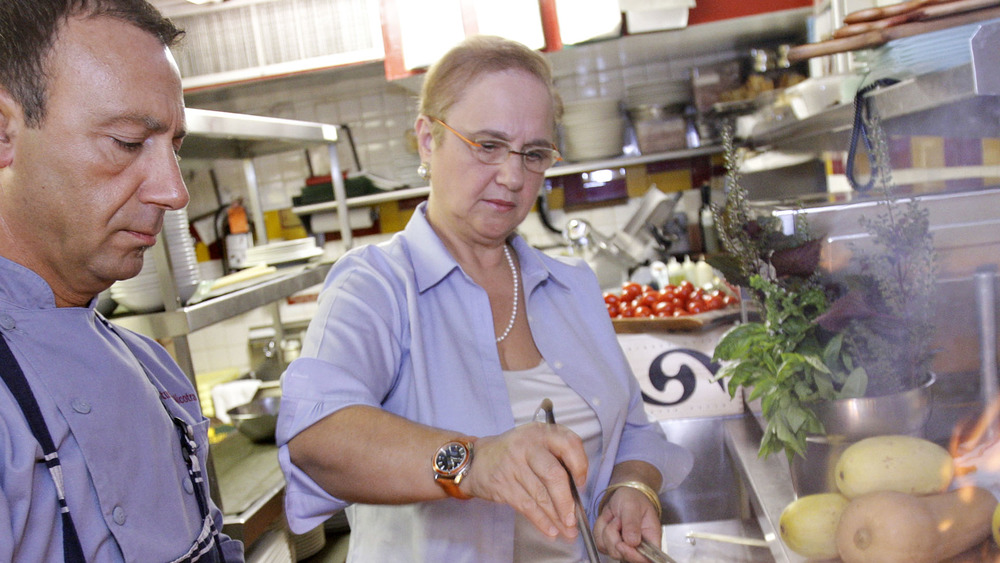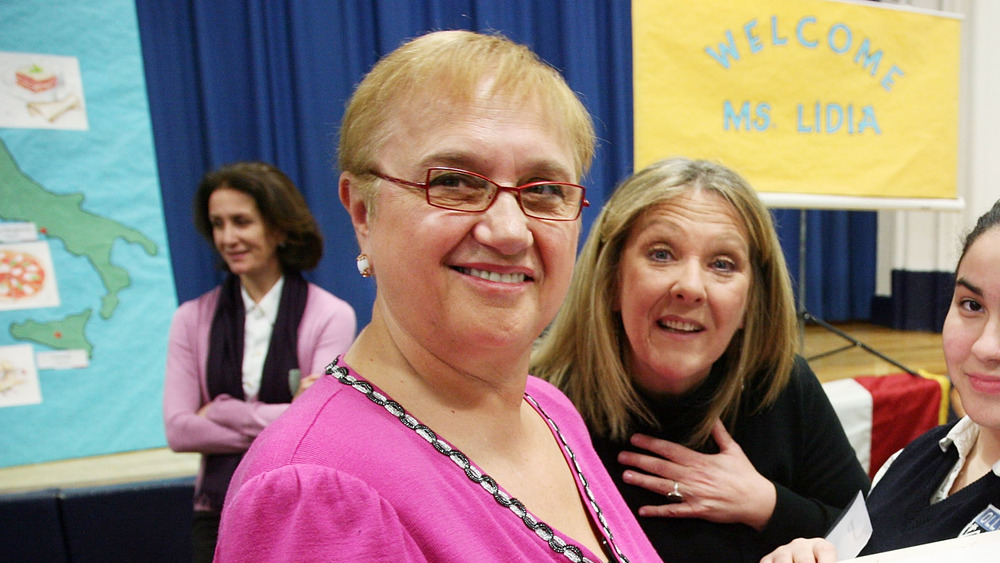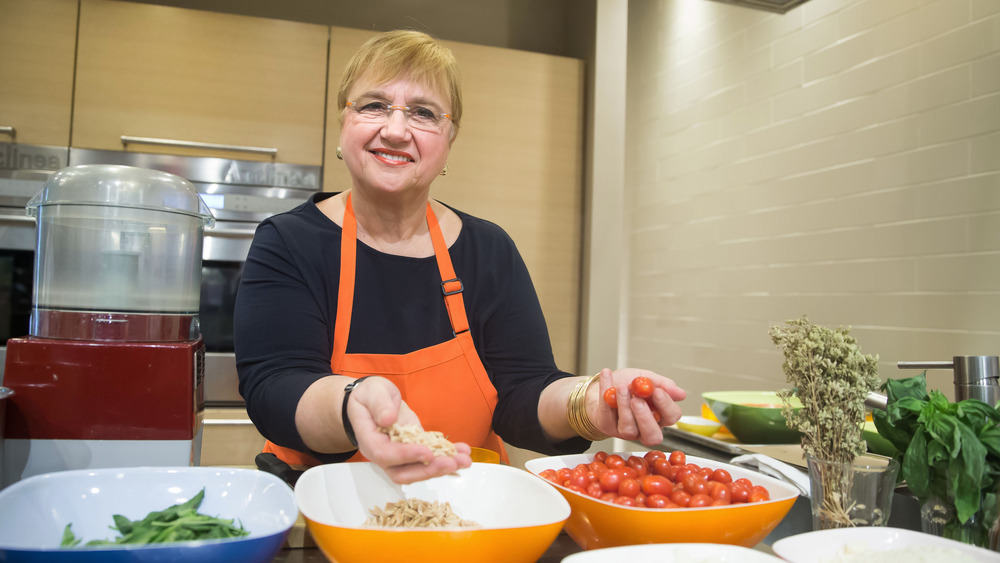The Untold Truth Of Lidia Bastianich
We may receive a commission on purchases made from links.
Viewers of public television might know Lidia Bastianich as the playful, uber-Italian grandmother type she has portrayed on screen since her first cooking series, Lidia's Italian Kitchen, debuted in 1998. But in addition to being a cuddly nonna who loves to whip up pasta and polenta for her five grandchildren, Bastianich, 74, is an award-winning chef, restaurateur, and bestselling cookbook author with a compelling backstory as an Italian immigrant who made it big in the American food world.
Born in 1947 in Istria, a northeastern area of Italy that became part of Yugoslavia after World War II (via The New York Times), Bastianich's early childhood was spent under difficult circumstances. Fortunately in 1958, U.S. president Dwight D. Eisenhower opened the country to political refugees, and Bastianich's family was finally able to emigrate, as noted by Feast. There, in the New World, Bastianich began constructing her new life as an authority on all things Italian food.
Who is Lidia Bastianich?
Today, chef and cookbook author Bastianich is probably most well known for her long-running public television cooking series, including Lidia's Family Table, Eating in with Lidia, and, her most recent series, Lidia's Kitchen (the eighth season premiered in 2020). On her shows, which were taped in her Queens, N.Y. home for many years, Bastianich cooks homey, nourishing Italian dishes, such as creamy risotto and baked penne. All the while, family members including son Joe and elderly mother Erminia, who recently passed away at the age of 100, pop by to twirl strands of linguine and sip glasses of nebbiolo.
But in addition to her cooking shows, Bastianich is also the author of 13 cookbooks and one memoir, and she is the chef and owner of restaurants in New York and Kansas City, as noted by her PBS bio. This multi-hyphenate food personality has come a long way.
Lidia Bastianich's childhood
As a child growing up on the Istrian peninsula — a territory that was ceded to Communist Yugoslavia at the end of World War II — Bastianich, for a time, had a happy life, according to Feast magazine. She recalled that she spent much of her childhood with her beloved grandmother, out among the farm animals and small selection of crops. "I would be her little helper, running around, collecting the eggs, shelling the peas, picking out the potatoes," Bastianich told Feast in 2017.
But in 1956, Bastianich's parents must have felt a sense of growing danger, because they decided to flee to the refugee camp in Trieste (via The New York Times). Bastianich remembers mourning the loss of all that was familiar to her. "I felt a pang that I'm not going to see Grandma," she told Feast. "I'm not going to see my friends. I'm not going to see my pet goat — whatever it is at that age that you are concerned about."
A new life in America and her first restaurant
After two trying years in a refugee camp called San Sabba (via Feast), Bastianich's family members received their visas to emigrate to America, and they relocated to Astoria, Queens, where a relative lived, as reported by The New York Times. In her new family home in New York, Bastianich cooked dinner every night, while her father worked a demanding job as a mechanic for Chevrolet and her mother sewed for the clothing company Evan Picone.
Later on, Bastianich enrolled in Hunter College with a scholarship, but she dropped out of the school just two years later in order to marry her new sweetheart, Felice, who had also emigrated from Istria. In 1971, according to The Daily Meal, the two opened the first of Lidia's many restaurants: Buonavia in Forest Hills, Queens. It became so successful that the couple opened a second spot.
More restaurants and an important TV debut
Felice and Lidia Bastianich's Italian fare continued to prove successful in New York, where, in 1983, the couple went on to open Felidia on the Upper East Side (via The Daily Meal). There they served hearty dishes, such as venison osso bucco over buttery spaetzle, according to a New York Times review.
Other restaurants, including the Theater District's Becco, were to follow, and Bastianich developed a reputation as an accomplished chef and immigrant success story. In 1993, public television star and revered home cook Julia Child invited Bastianich as a guest on her series Julia Child: Cooking with Master Chefs; the episode, on which Bastianich prepared "mushroom risotto and orecchiette pasta with broccoli and sausage," was later nominated for a 1994 Emmy award.
Just a few years later, PBS offered Bastianich her own show, Lidia's Italian Kitchen, and her first cookbook, Lidia's Italian Table, was published as a companion to the show.
Lidia Bastianich continued her food empire with Eataly
In 2010, soaring on the success of her various television, cookbook, and restaurant projects, Bastianich partnered with son Joe, chef Mario Batali, and businessman Oscar Farinetti to open the first U.S. location of Eataly, the sprawling, 50,000-square-foot conglomeration of Italian-themed restaurants and shops located in New York's Flatiron District. The venture was an immediate success, with locals and tourists alike filling their shopping baskets with fresh pasta, aged cheeses, and fine wines. In October 2010, just a few months after Eataly opened, The New York Times called the location "enormously crowded." Today, there are seven Eataly locations across the country.
Now a long way from her difficult origins across the Atlantic, Bastianich has created a life — and a career — on new shores. And through her food, she has learned about the culture of her second home. "I'm an immigrant," she told GBH in March 2021, promoting her special Lidia Celebrates America: A Salute to First Responders. "I wanted to know more about America, about what makes America America."
